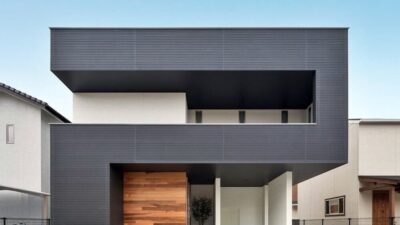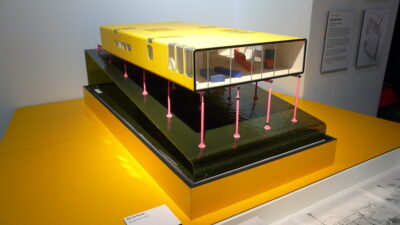The field of architecture is a unique blend of creativity, science, and technology, playing a crucial role in shaping the environments we inhabit. In Washington State, architects are instrumental in designing structures that are not only functional and safe but also aesthetically pleasing and environmentally responsible. This article provides a comprehensive guide for those aspiring to join this esteemed profession in Washington, detailing the educational requirements, licensing processes, practical experience acquisition, and ways to remain current and successful in this dynamic field.
Educational Path
The journey to becoming an architect in Washington begins with a solid educational foundation. The state boasts several universities offering accredited architecture programs. Notable among these are the University of Washington and Washington State University, both recognized by the National Architectural Accrediting Board (NAAB). These institutions provide rigorous training, equipping students with the necessary knowledge and skills to excel in the architectural field.
At these universities, students are immersed in a curriculum that balances theoretical knowledge with practical skills. Courses cover a wide range of topics, from the history and theory of architecture to the latest in sustainable design and building technologies. Students learn to think critically about design and how it impacts both the environment and society. They engage in studio work, which is integral to architectural education, where they apply their learning in a hands-on, creative environment. This approach not only fosters creativity but also develops the technical expertise required in the profession.
Furthermore, these programs often include opportunities for real-world experience through internships and cooperative education programs. Such experiences are invaluable, allowing students to work alongside experienced architects and gain insights into the day-to-day workings of the profession. They also provide a platform for networking, which is crucial in the architecture industry. By the time students graduate, they not only have a degree but also a portfolio of work and professional connections, setting the stage for their future careers. With a focus on innovation and adaptability, these educational institutions in Washington prepare students to meet the challenges of modern architecture. They are encouraged to think beyond traditional boundaries and to consider the broader implications of their designs on communities and the environment. This holistic approach to architectural education is what sets Washington’s architects apart, ready to contribute significantly to the state’s dynamic and diverse architectural landscape.
Bachelor’s Degree in Architecture
The Bachelor of Architecture (B.Arch.) program, typically spanning five years, is a comprehensive course that establishes a robust foundation for a career in architecture. This program encompasses a broad spectrum of subjects vital to the architectural profession, including architectural design, history, theory, building science, and technology. Students engage in a curriculum that encourages them to approach design with both creativity and critical thinking. This approach is crucial in helping them understand how architecture intersects with culture, society, and technology.
In the B.Arch. program, students explore the intricacies of architectural design, learning to create spaces that are both functional and aesthetically pleasing. The historical and theoretical components of the course provide a deep understanding of the evolution of architectural styles and philosophies over time. This knowledge is essential in helping students develop a unique architectural perspective that is both informed and innovative.
Moreover, the program places significant emphasis on the technical aspects of building and construction. Students learn about the latest in building materials, construction techniques, and environmental systems. This technical expertise is critical for ensuring that designs are not only visually appealing but also structurally sound and sustainable. Sustainability and eco-friendly design are increasingly important themes in modern architecture, and the B.Arch. program in Washington State reflects this trend. Students are taught to consider the environmental impact of their designs, learning how to create buildings that are energy-efficient, environmentally sustainable, and harmonious with their surroundings.
Internships and practical experience are integral parts of the B.Arch. program. These opportunities provide students with hands-on experience in the field, offering a glimpse into the day-to-day work of architects. Internships are a valuable platform for students to apply classroom knowledge in real-world settings, tackling actual architectural projects and challenges. They also play a crucial role in helping students build professional networks, which are invaluable for career advancement in the architectural industry.
Through these comprehensive and immersive educational experiences, students graduating from a B.Arch. program are well-equipped with the knowledge, skills, and practical experience necessary to embark on their professional journey in architecture. They emerge as well-rounded individuals, ready to contribute innovative and sustainable solutions to the architectural landscape of Washington and beyond.
Architect Registration Examination (ARE)
After completing their education, aspiring architects must pass the Architect Registration Examination (ARE), a national licensure exam administered by the National Council of Architectural Registration Boards (NCARB). The ARE assesses candidates across various aspects of architectural practice, ensuring they have the knowledge and skills necessary for independent practice.
The ARE is a comprehensive examination that covers a wide range of topics relevant to the practice of architecture. It is designed to test a candidate’s ability to understand and apply knowledge in areas such as project management, environmental issues, building design, construction technology, and professional ethics. The exam is divided into several sections, each focusing on a different aspect of architectural practice. This segmented approach allows candidates to demonstrate proficiency in each crucial area of the profession.
Preparing for the ARE is an intensive process that requires dedication and a deep understanding of architectural principles and practices. Many candidates spend months studying for the exam, often participating in study groups and review sessions. This preparation is not only about passing the exam but also about reinforcing and expanding the knowledge gained during their academic years.
Additionally, Washington State may have specific requirements that complement the ARE. This could include a state-specific law and ethics exam or additional professional experience. Aspiring architects should familiarize themselves with these requirements by consulting with the Washington State Board for Architects. Understanding these additional requirements is crucial, as they are designed to ensure that all practicing architects in Washington are well-equipped to handle the unique challenges and opportunities presented by the state’s diverse architectural landscape.
Passing the ARE and meeting state-specific requirements mark a significant milestone in an architect’s career. It signifies their readiness to take on the responsibilities of the profession and contribute meaningfully to the built environment. It is a testament to their hard work, knowledge, and commitment to upholding the standards of the architectural profession.
State-Specific Licensing in Washington
In addition to passing the Architect Registration Examination (ARE), Washington State mandates specific criteria to be met for licensure. These criteria are designed to ensure that architects have not only theoretical knowledge but also practical experience in the field. One crucial component is the accumulation of a certain number of hours of supervised practical experience, typically obtained through the Architectural Experience Program (AXP) managed by the National Council of Architectural Registration Boards (NCARB).
The AXP is a comprehensive program that guides aspiring architects through various core competencies essential to the practice. These competencies include areas such as design, project management, construction documentation, and professional ethics. The program ensures that candidates gain real-world experience under the supervision of licensed architects. This hands-on experience is invaluable, as it provides a practical understanding of the day-to-day responsibilities and challenges of being an architect. It also offers an opportunity to apply theoretical knowledge in a practical setting, further solidifying the skills needed for successful architectural practice. Additionally, Washington State may impose other state-specific requirements or exams. These could include a detailed understanding of local building codes, environmental regulations, or other aspects pertinent to practicing in the unique landscapes and cities of Washington. Such requirements ensure that architects are well-versed in state-specific considerations, enhancing their ability to design buildings that are not only aesthetically pleasing but also compliant with local standards and regulations.
Aspiring architects are advised to consult the Washington State Board for Architects for the most current and detailed requirements. Staying informed about these requirements is crucial, as they can change and evolve over time. Compliance with these state-specific mandates, along with the successful completion of the ARE and AXP, ensures that architects are thoroughly prepared to embark on their professional journey in Washington, equipped with the knowledge, skills, and experience to excel in this dynamic field.
Conclusion
Embarking on a career in architecture, especially in a state as diverse and progressive as Washington, is both a challenging and rewarding endeavor. From the rigorous academic journey to the comprehensive licensing process and the continuous pursuit of professional development, each step is a building block towards a successful career in architecture. Aspiring architects must embrace the combination of creativity, technical knowledge, and practical experience to thrive in this field.
In Washington, the unique blend of natural beauty, environmental consciousness, and urban development provides a fertile ground for architects to innovate and excel. Whether contributing to the iconic skyline of Seattle or designing sustainable living spaces in the state’s more rural areas, architects have the opportunity to make a lasting impact on the communities and landscapes around them. Finally, remember that architecture is a profession that constantly evolves with technology, environmental needs, and societal changes. Therefore, continuous learning and adaptation are key. By staying informed and engaged with the latest trends and advancements in the field, you can ensure a fulfilling and dynamic career as an architect in Washington.











